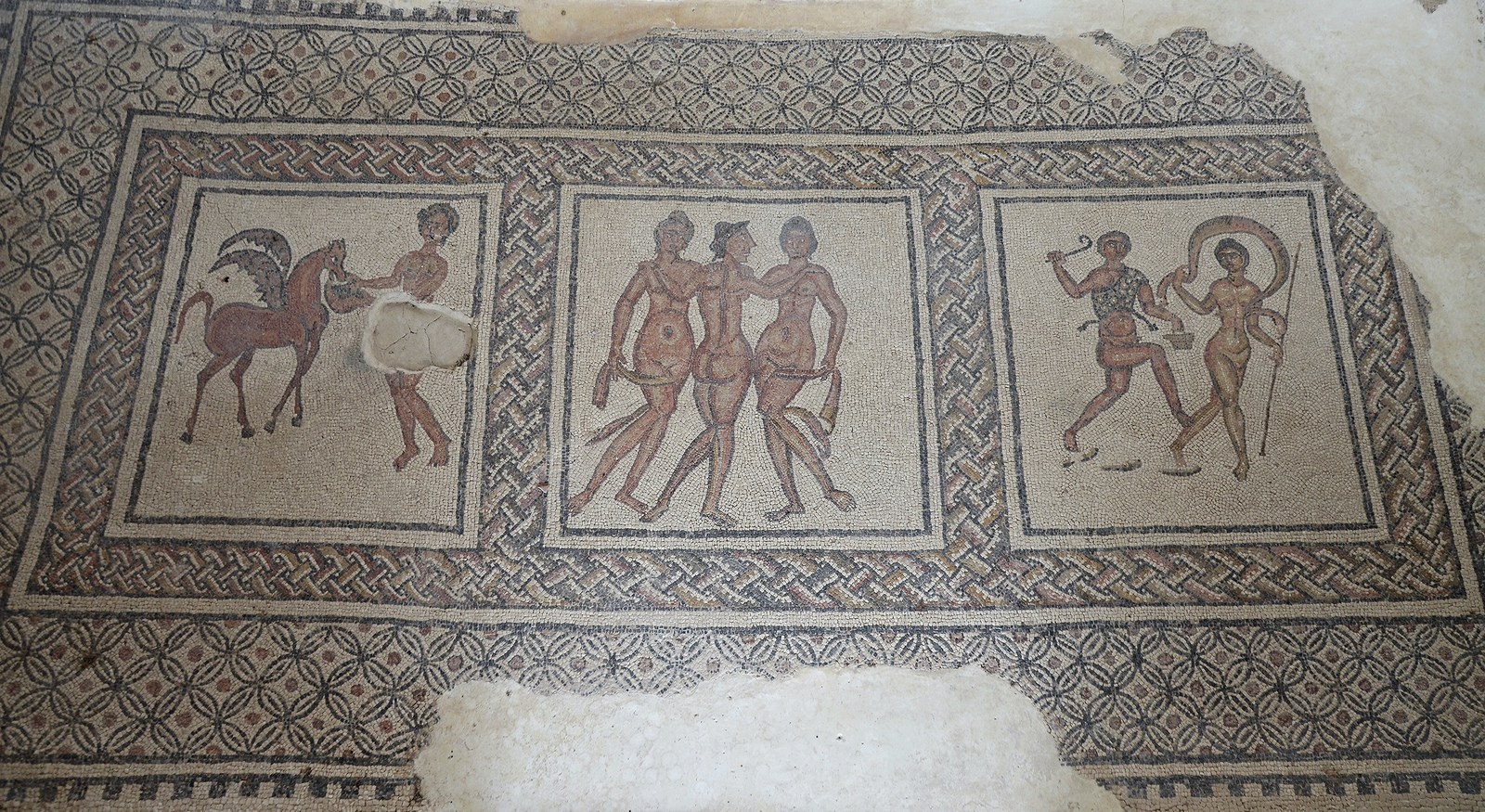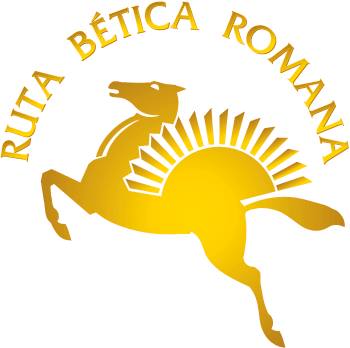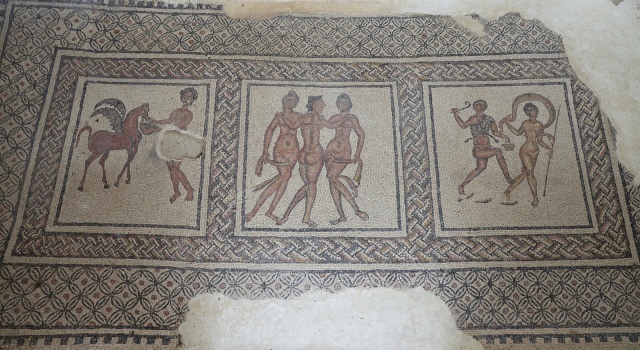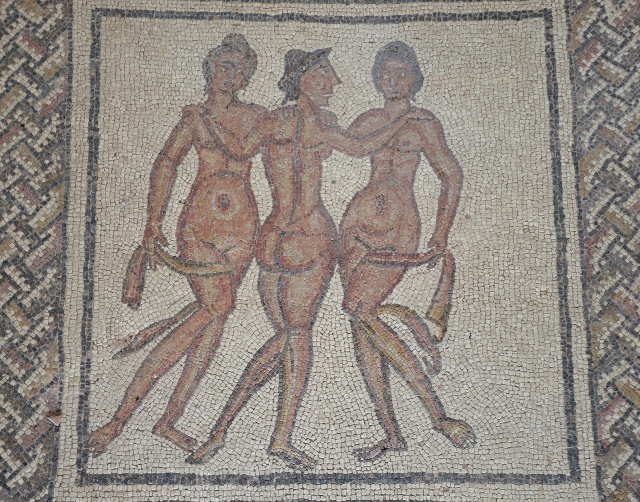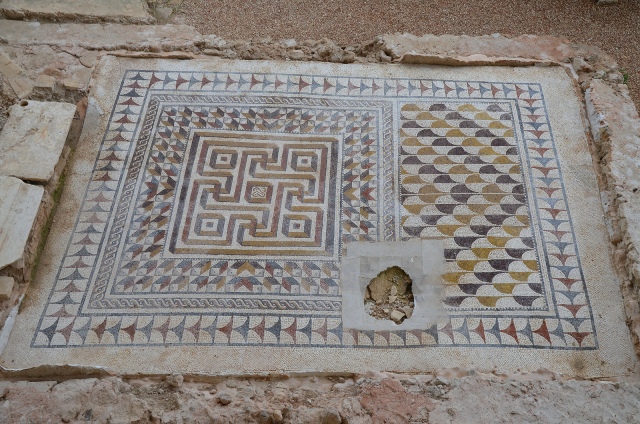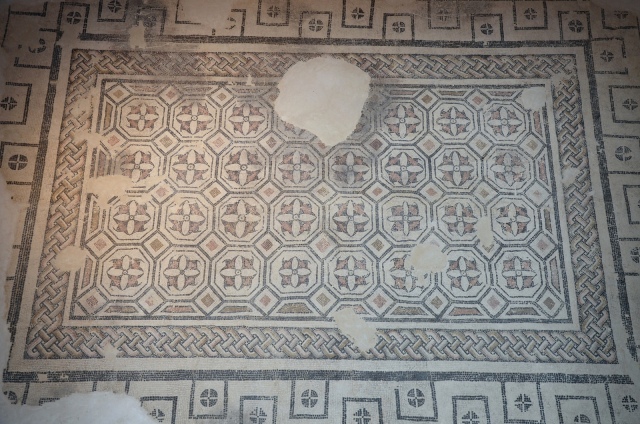On a recent trip to southern Spain, I travelled along the Roman Baetica Route and visited many of the archaeological sites and museums that Andalusia has to offer. Among the plethora of ancient treasures to be found in the region, I was particularly impressed by the incredible mosaics I came across. This installment of the series will focus on the Roman villa of Fuente Alamo and the museum of Roman mosaics in Casariche.
The Roman Baetica Route is an ancient Roman road that passes through fourteen cities of the provinces of Seville, Cadiz, and Córdoba, which correspond to modern-day Andalusia. It runs through the most southern part of the Roman province of Hispania and includes territories also crossed by the Via Augusta. The route connected Hispalis (Seville) with Corduba (Córdoba) and Gades (Cádiz). The word Baetica comes from Baetis, the ancient name for the river Guadalquivir.
Villa Romana de Fuente Alamo
The Roman villa of Fuente Alamo is situated next to a stream and surrounded by olive groves, about 3 km away from the town of Puente Genil. It is a Hispanic-Roman villa built in the 3rd – 4th century CE that was devoted to wine and olive oil production, like many others that proliferated around that time in Hispania. Fuente Alamo is well-known thanks to its mosaics in an excellent state of preservation. The three most important figurative mosaics are The Triumph Bacchus, the Three Graces and the Nilotic mosaic (now in the Archaeological Museum of Cordoba, although not currently on display). There are also geometric mosaics of different periods, manufacturing methods, and bichrome and polychrome compositions. These mosaics provide us with information about interests and social status of the villa’s owner.
The first mosaic is known as The Triumph Bacchus. In the lower scene, Bacchus, bearing a crown of vine leafs and grapes, attacks the Indians. Satyrs and nymphs, loyal followers of Bacchus, come to the attack while the Indians try to defend themselves. One of them, standing on his feet, brandishes his sword and shield in a vain attempt to survive. Rejoicing for his victory, Bacchus marches triumphantly in the upper scene in a chariot pulled by tigresses. Carried by a small donkey is Silenus, Bacchus’ former tutor and man of great wisdom. At the center of the composition lays the god Pan, protector of shepherds and flocks as well as Bacchus and Ariadne, his loyal lover, on the left. The apse is paved with a mosaic depicting a shell divided into 28 segments as a central theme. It is highly possible that it once held a representation of the Goddess of love, Venus, emerging from the sea in a shell. With this design, the owner of the house wanted to symbolize the spirit of fertility, regeneration and vitality.
The second mosaic represents the Three Graces, the goddesses of grace, beauty, adornment, mirth, festivity, dance and song. Their names are Aglaea (“Splendor”), Euphrosyne (“Mirth”) and Thalia (“Good Cheer”). They preside over the ceremonies, dances and all pleasant social events. Together with the Muses, their companions, they sang to the gods in Mount Olympus and danced to the rhythm of the beautiful music that Apollo played with his lyre. In classical art, the Three Graces were usually depicted as naked women, holding hands and dancing in a circle, like in this mosaic from Fuente Alamo. To their left, Pegasus, the god’s winged horse, is fed by a nymph; to the right a satyr is engaged in his favorite activity, pursuing the nymphs, as they were never sexually satisfied.
The following mosaic floor is a geometric mosaic made of thousands of tesserae of different colours, with a size of 8 to 10 millimetres. A band formed by triangles in red and black colour frames the two panels of the mosaic. The larger panel is framed by a border decorated with two-stranded braids. Tri-dimensional elongated cubes give movement to the scene, embracing a labyrinth where our imagination gets lost. The square in the centre is decorated with a Solomon’s knot. The design of the smaller panel features pelta motifs, a semi-circular shield pattern.
Museo del Mosaico de Casariche
The town of Casariche is located 122 km east of Seville. In the new Roman Mosaic Museum, inaugurated in 2014, you can see the collection of mosaics extracted from the nearby Villa del Alcaparral. Among the mosaics discovered is the mosaic of Judgement of Paris exhibited in the Archaeological Museum in Seville and presented earlier. The desire of the museum is to have the mosaic returned from Seville. The image digital reconstruction below shows how the mosaic would be exhibited in the villa.
The Roman villa of El Alcaparral was discovered in 1985. It is a late Roman villa rustica whose existence extended from the mid-3rd century AD to the early 5th century AD. It is likely that its destruction was linked to the invasion of the Vandals in 411 AD, given the remains of ash found in a stratum of the site. The villa belonged to a rich aristocratic landowner who traded with Byzantium during the crisis of the Western Roman Empire. At the crossroads of the trade route, the villa controlled a vast territory dedicated to olive oil exportation.
A mosaic floor with a central octagonal medallion portrait, probably an allegory of Spring, paved the oecus, the principal hall or salon in a Roman house. The portrait is surrounded by geometric motifs.

Detail of the mosaic floor with a central octagonal medallion portrait, probably an allegory of Spring, that paved the oecus of the Villa del Alcaparral, Roman Mosaic Museum, Casariche. Image © Carole Raddato.
The tablinum of the villa was paved with a black and white geometric mosaic with swastika motifs.
Another oecus near the tablinum had a geometric mosaic with octagons framed by a border of braids and a meander border. Unfortunately the mosaic was deteriorated by fire.
This concludes our series on the mosaics of the Baetica route. For more information on the route, visit its official web site here.
Originally published at Following Hadrian; republished with permission.
